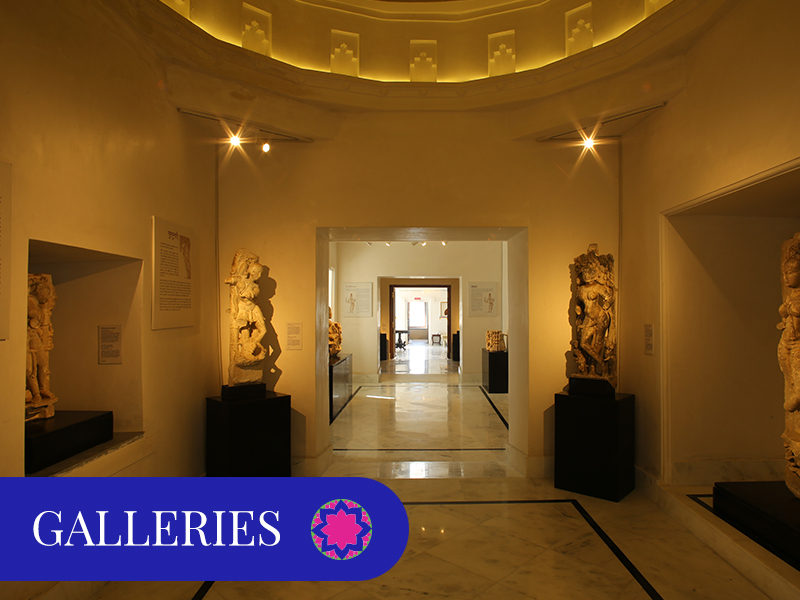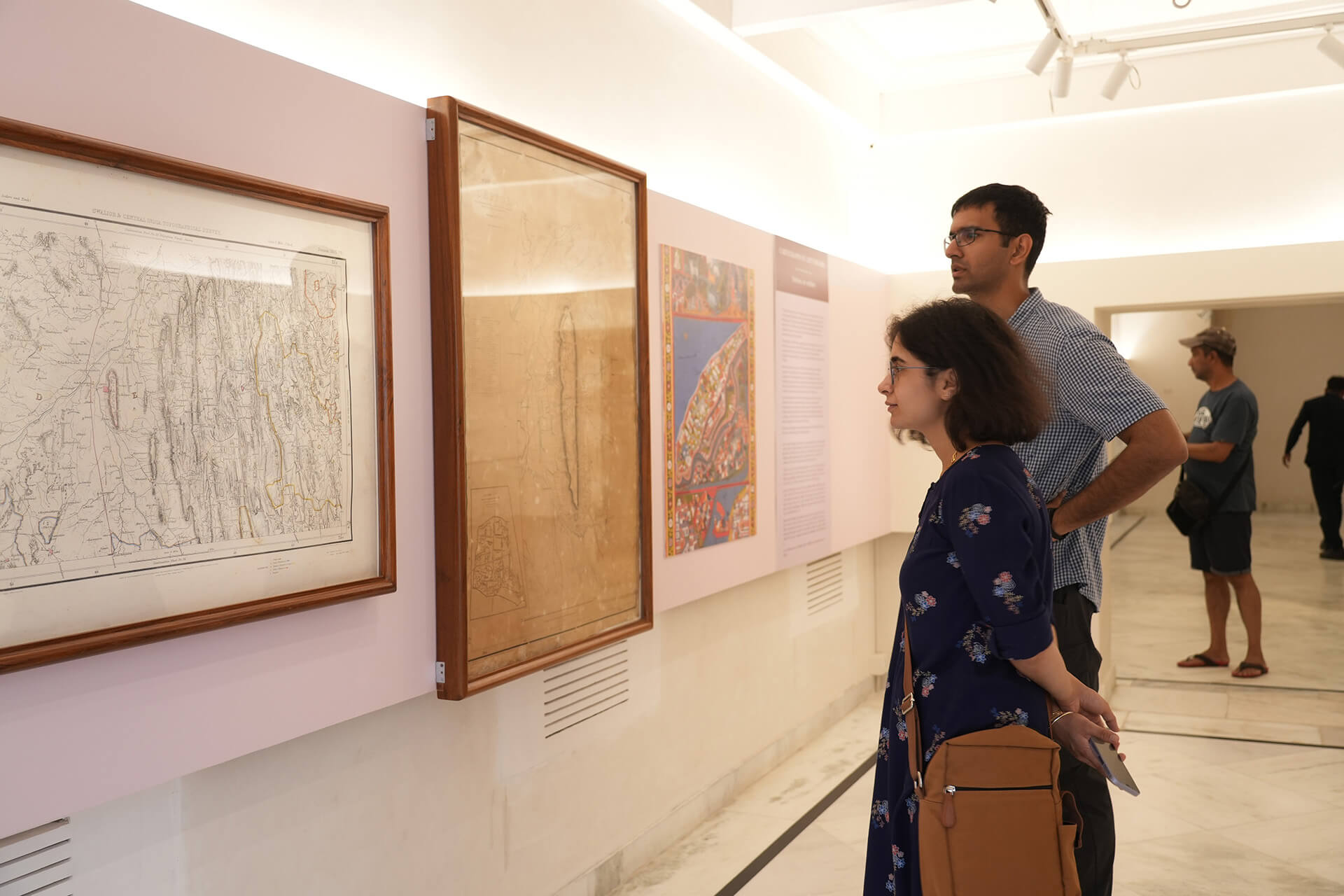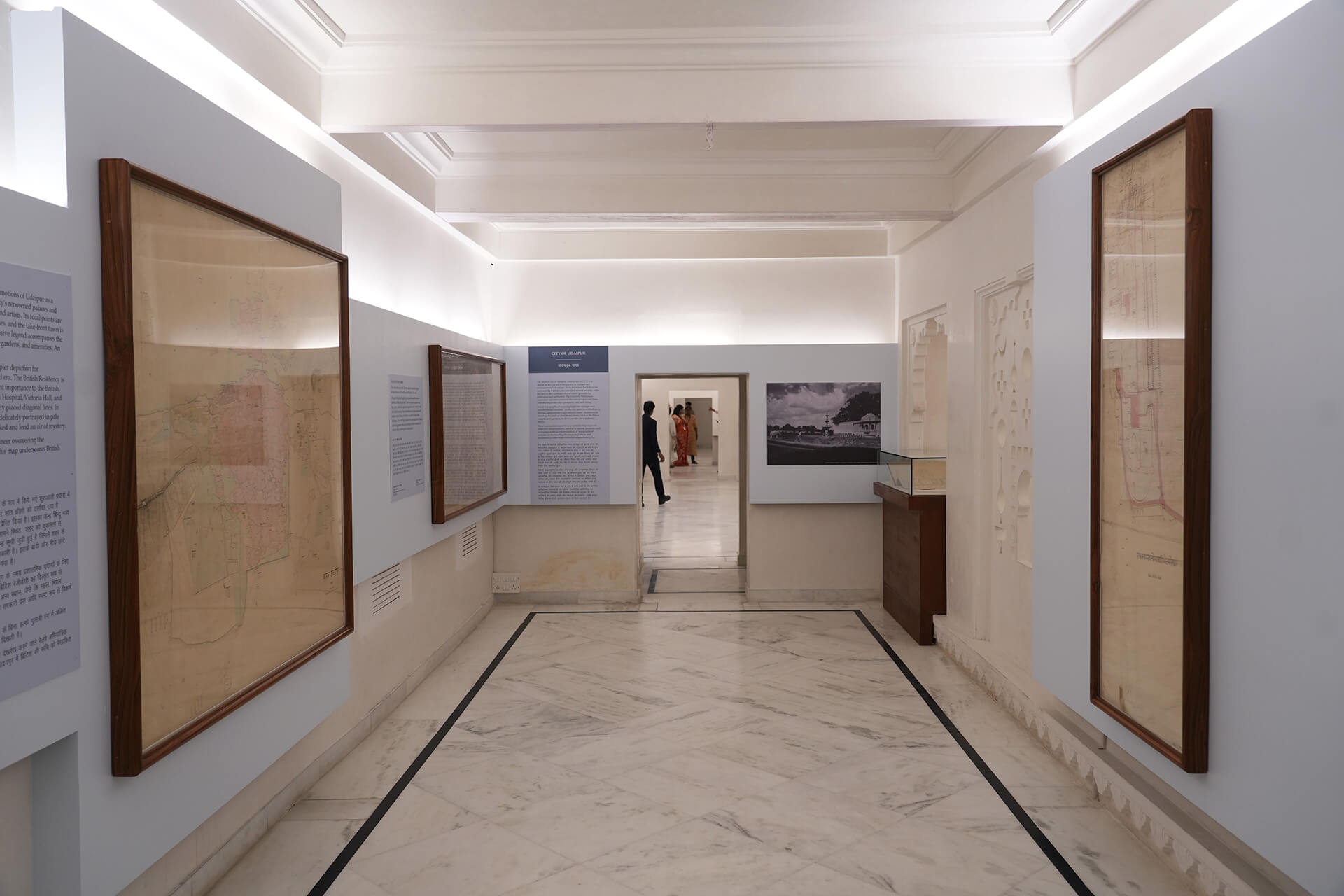

The display provides a comprehensive explanation of the utility of weapons in Mewar from the 16th to 20th century; ranging from rare, personal weapons of Maharanas to arms for the Mewar army. The gallery forms one of the oldest portions of the palace – historically, its construction was started in 1553 and supposedly completed in 1559; initially conceptualized and utilized as living rooms for guests, it was subsequently converted into an arms storage which is perhaps when the word Saleh Khana came into usage to imply the same. Etiquettes of the court required the royal guests to deposit their weapons in this very area before meeting with the king.
The changing socio-political situations in the Indian subcontinent, at the start of the 17th century, necessitated enhanced security measures to be taken for women. In Mewar, the period saw a shift in the Zenana, or the Palace for the royal ladies, in the City Palace Complex. The new Zenana, in its present location, was dedicated solely to the women, and came with a heightened sense of the Purdah, or state of seclusion. The exhibition looks past these screens to highlight the workings and nitty-gritty of the system therein, dating back to approximately 300 years. It illustrates several examples of strength, valour, sacrifice, leadership, and public welfare initiatives, on part of the royal women. It also elucidates what these spaces were like when they served as living quarters for the royal ladies, ladies-in-waiting, and other women staff.
The exhibition delves into the captivating world of maps and cartography in Mewar, juxtaposing exquisite paintings showcasing the city and its landscape with British and European maps. Installed at the Fateh Niwas Gallery, Zenana Mahal, the exhibition is made possible with the support of the Getty Foundation under their grant - The Paper Project, awarded to the City Palace Museum in 2021. The grant aims to foster curatorial innovation to highlight underexplored works and make collections more accessible and relevant to present-day audiences.
Successive generations of the Maharanas of Mewar commissioned and patronized several artists at their courts who went on to produce wonderful works, known across the world as belonging to the Mewar school of paintings with use of rich, vibrant colours. They capture several aspects of the lives of the Maharanas - royal processions, celebrations and rituals, visit to religious places or shrines, extravagant hunting scenes, animal fights and wrestling scenes. Drawn from this ancestral collection of the rulers of Mewar, the exhibition places paintings at the heart of Mewar’s court life. It emphasizes on the role of paintings as going beyond their illustrative and documentary nature to reflect not only the power and authority of the Maharanas but also its strategic use in the self-fashioning of the Sisodia dynasty. It particularly acknowledges and celebrates the role and skill of Udaipur’s artists; an underlying theme in the exhibition. This exhibition was made possible by the financial assistance provided by the Ministry of Culture, Government of India.
Textiles vary from region to region. Mewar family, has over the years preserved this cultural heritage; passing it down through the ages, with occasional experimentations in design, color, etc. The textiles housed within this gallery are remarkable for their design, use of the finest fabrics and embellishments, and bold workmanship, all of which are quintessential qualities of the arts of Mewar.
Several types of textile works are on display. Garments worn by members of the Mewar family includes Angrakha and Choga, the traditional outfits for men, Ghagra and Choli, intricately woven shawls and delicately embroidered sarees for women, apparel and caps of the royal children. The Gallery also showcases rich embroidered carpets, door hangings, silk covers for chairs and much more. One must definitely not miss the 400-year-old palanquin covered with very fine silk cloth, embroidered with gold and silver thread that is also on display.
The royal life called for an even more regal mode of transport; be it for grand ceremonial processions, devotional visits to shrines, meetings with the general public, or the royal hunts. For royal ladies or brides, there were highly ornate palanquins, locally called Mahajaans. These tended to be more closed as compared to those for the Maharanas, to provide them their privacy. The delicately embroidered curtains and at times, shutter-doors, enabled this. The palanquin would be borne by the handrails that are fitted at either ends of the chamber.
Taam- Jams or single-seat sedan chairs and the Takhat (seat placed on raised platform, dating back to the time of Maharana Bheem Singh, r. 1778 – 1828) were borne in a similar fashion, with the handrails. Pharkies and Howdahs are two types of open litters that are mounted on top of the elephant backs; the first being on the occasion of hunting and the second for grand ceremonial processions.
Wood has been extensively used in the making of these modes of transport; some have polychrome designs, glasswork, ivory inlay etc. The radiant sun symbol, the emblem of the House of Mewar is popularly used, as also lion and other animal motifs that symbolize power and grandeur, and floral patterns.
The display features stone sculptures from in and around Shree Eklingnath ji Temple, Kailashpuri that follows the Gurjara-Pratihara style of temple construction. Out Of the 308 sculptures which are in the collection of The City Palace Museum, Udaipur, 105 are on display. Thematically they can be classified under four sections: Gods, Surasundaris, Goddesses and animal motifs / memorial stones. The Modernization / Renovation of Sculpture gallery was undertaken with the financial assistance from the Ministry of Culture, Government of India, New Delhi, under the scheme 'Setting Up, Promotion & Strengthening of Regional & Local Museums'.
The land of Mewar and its Maharanas, have over the years, provided immense patronage to persons engaged in performing arts, including those belonging to the field of music. Some of them took a very keen interest themselves. The massive collection is a result of their dedication and love for this fine art. Examples of the musical instruments are Tabla, Pakhavaj, a traditional Mewari instrument called Kamayacha, Violin, Taus, Sitar, Tanpura, Piano, Harmonium, and some old Gramophones, amongst others. These have passed down through the generations and some of them are as old as 200 years.
Nestled in what would have once been thriving quarters of the Zenana with an equally vibrant courtyard, stands the Silver Gallery; the first gallery in all of Asia to be solely dedicated to silver. Situated in Amar Mahal of the Zenana, the gallery was opened to its visitors on 3rd March 2013.The name of the gallery, the Splendour of Silver - Reflecting the finest of Silver Smithy, holds true to its name. Silver, being abundantly available in Rajasthan, was extensively used in royal households. Several styles of silver smithy can be observed in the collection; local Rajasthani, Kutch, Islamic, etc. The collection dates back to the late 18th to 20th century and each of the items on display have been used within The Royal Family of Mewar. It includes a wide range of objects; items of religious significance, leisure and entertainment, utensils and other personal items, horse and elephant jewellery, items used in transportation etc.



